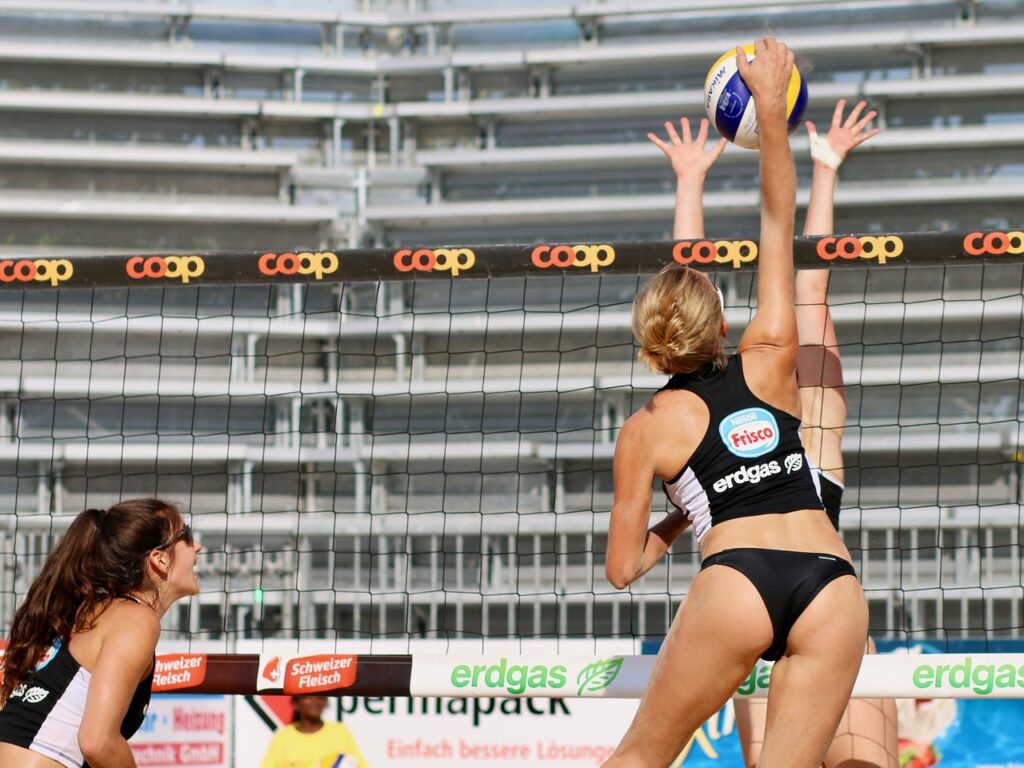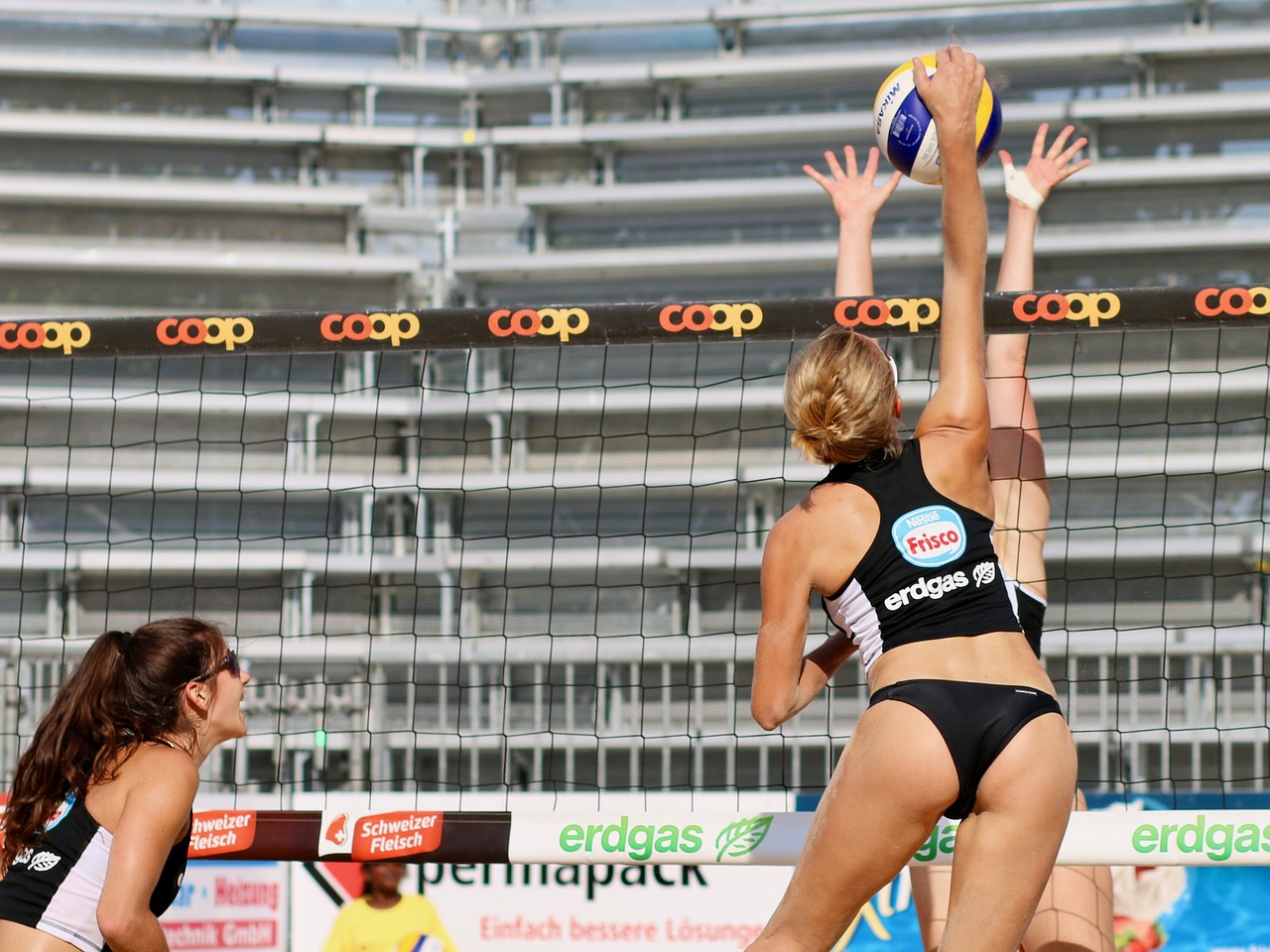Volleyball is a thrilling sport loved by millions worldwide, whether played indoors on a hard court or outdoors on a sandy beach. One of the most common questions for new fans and players is, “How many sets are in a volleyball game?”
This guide answers that question in detail, breaking down the rules for indoor and beach volleyball, exploring variations across leagues, and diving into the strategic impact of sets. Whether you’re a beginner, a casual fan, or a coach, this post will help you understand volleyball’s structure and why it matters.
A standard indoor volleyball game is played in a best-of-five sets format, with the first team to win three sets declared the winner. Beach volleyball uses a best-of-three sets format, where the first team to win two sets wins the match.
By the end of this guide, you’ll know everything about volleyball match sets, including tips to deepen your appreciation of the game. Let’s dive in like a perfectly timed spike!
How Many Sets are in a Volleyball Game?

This section provides a detailed examination of the number of sets in volleyball games, aiming to offer a thorough understanding for both casual fans, lovers of the game and newbies.
How Many Sets in Indoor Volleyball?
Indoor volleyball, played by teams of six on a hard court, follows a best-of-five sets format in most competitive settings. This means a match continues until one team wins three sets, making it the winner. Here’s how it works:
- Set Rules: The first four sets are played to 25 points, and a team must win by at least two points. For example, if the score is 24-24, play continues until one team leads by two, such as 26-24 or 27-25.
- Fifth Set (Tiebreaker): If the match reaches a fifth set, it’s played to 15 points, still requiring a two-point advantage. This shorter set adds intensity, as every point is critical.
- Official Standards: The Fédération Internationale de Volleyball (FIVB), the sport’s global governing body, outlines these rules in the Official Volleyball Rules 2025-2028. The NCAA and NFHS adopt similar standards for college and high school volleyball in the U.S.
For example, in a professional match, Team A might win the first set 25-20, lose the second 23-25, and win the third 25-22. If they win the fourth set, they take the match 3-1 without needing a fifth set. However, if the score is tied 2-2, the fifth set decides the winner.
Recent rule updates, as noted in NFHS Volleyball Rules Changes 2025-26, focus on uniforms and contacts but confirm the best-of-five format remains unchanged, ensuring consistency for fans and players.
How Many Sets in Beach Volleyball?

Beach volleyball, played by teams of two on sand, uses a best-of-three sets format, making matches shorter and faster-paced than indoor games. Here’s the breakdown:
- Set Rules: The first two sets are played to 21 points, with a team needing a two-point lead to win. If the score reaches 20-20, play continues until a two-point advantage is achieved, like 22-20 or 23-21.
- Third Set (Tiebreaker): If each team wins one set, a third set is played to 15 points, still requiring a two-point lead. This set is often a nail-biter due to its brevity.
- Official Standards: The FIVB governs beach volleyball rules, as detailed in the Official Beach Volleyball Rules 2025-2028. These rules apply to Olympic and professional competitions, as confirmed by NBC Olympics Beach Volleyball 101.
For instance, in an Olympic beach volleyball match, Team A might win the first set 21-18, lose the second 19-21, and then win the third set 15-13 to claim victory. The best-of-three format ensures quick, high-energy matches perfect for beach settings.
Variations in Youth, College, and Professional Volleyball
While the best-of-five and best-of-three formats dominate indoor and beach volleyball, variations exist depending on the level of play. Here’s a closer look:
- Youth Volleyball: To accommodate younger players, some youth leagues, as noted in USA Volleyball’s Simplified Youth Rules, play best-of-three sets to 15 or 21 points. This shortens match times and suits developing skills. For example, a local under-12 league might play sets to 15 to keep games engaging.
- College Volleyball: The NCAA, as outlined in NCAA Volleyball 101, uses the best-of-five sets format for both men’s and women’s indoor volleyball, with sets to 25 points and a fifth set to 15. Beach volleyball under NCAA rules follows the best-of-three format.
- Professional Volleyball: Professional leagues, like those under FIVB, stick to best-of-five for indoor and best-of-three for beach volleyball. However, some domestic pro leagues may experiment with formats, such as best-of-three for regular-season matches to save time.
- Recreational Leagues: Local or recreational games may adjust rules, playing best-of-three sets to 21 points, as mentioned in The Art of Coaching Volleyball.
These variations ensure volleyball is accessible and exciting at all levels. A recent X post from a volleyball community discussed minor rule tweaks but confirmed set structures remain consistent, reinforcing their stability for SEO content.
Summary Table
| Type of Volleyball | Number of Sets | Points per Set | Deciding Set Points | Win Condition |
|---|---|---|---|---|
| Indoor Volleyball | Best of 5 | 25 | 15 | First to 3 sets |
| Beach Volleyball | Best of 3 | 21 | 15 | First to 2 sets |
| Youth (varies) | Best of 3 | 15 or 21 | N/A | First to 2 sets |
How Sets Impact Volleyball Strategy
The number of sets in a volleyball game shapes team strategy, adding layers of excitement for players and fans. Think of sets like chapters in a book—each one tells part of the story, and the final chapter determines the outcome. Here’s how sets influence strategy:
- Energy Management: In indoor volleyball’s best-of-five format, teams must pace themselves over potentially five sets. Coaches use substitutions and timeouts strategically, as noted in College Volleyball 101. For example, saving key players’ energy for a fifth set can be a game-changer.
- Psychological Edge: Winning the first set boosts confidence, while losing it requires mental resilience. Teams often adjust tactics after a set, like changing serve targets or blocking schemes.
- Tiebreaker Intensity: In both indoor (fifth set to 15) and beach volleyball (third set to 15), the shorter set heightens pressure. Every point matters, leading to aggressive plays or cautious serves.
- Beach Volleyball Dynamics: With only two players per team, beach volleyball’s best-of-three format demands quick adaptation. As discussed in How NCAA Beach Volleyball Works, communication is key, especially if a team drops the first set.
For example, in a close indoor match, a team trailing 2-1 in sets might use a timeout to disrupt the opponent’s momentum. In beach volleyball, a duo might switch roles (one focusing on defense, the other on attack) to win a crucial third set. These strategic nuances make volleyball a mental and physical chess match.
Top 5 Tips for Understanding Volleyball Sets
To help you grasp volleyball sets and enjoy the game more, here are five practical tips:
- Learn the Scoring Basics: Memorize that indoor sets are to 25 (fifth to 15) and beach sets are to 21 (third to 15), always with a two-point lead. This clarity helps you follow matches without confusion.
- Watch Tiebreakers Closely: The fifth set in indoor or third set in beach volleyball is where drama peaks. Pay attention to how teams adjust under pressure—it’s a masterclass in strategy.
- Explore Rule Variations: Check local league rules, especially for youth or recreational play, as they may differ. Resources like USA Volleyball are great starting points.
- Track Set Momentum: Notice how winning or losing a set affects team morale. For example, a team that wins a tight set often carries confidence into the next one.
- Engage with the Community: Join volleyball forums or follow X accounts like r/volleyball to stay updated on rules and share insights with fans.
These tips will make you a savvier volleyball fan, whether watching the Olympics or a local game.
Frequently Asked Questions (FAQ)
How Many Sets Are Needed to Win a Volleyball Game?
Indoor volleyball requires a team to win three out of five sets. Beach volleyball requires two out of three sets, as per FIVB rules Official Volleyball Rules.
How Long Does a Volleyball Set Last?
A set typically lasts 20–30 minutes, depending on competitiveness and rallies, as noted in Volleyball Rules Explained. Tiebreakers may be shorter.
What Happens if a Set is Tied at 24-24 in Indoor Volleyball?
Play continues until one team achieves a two-point lead, such as 26-24, as per FIVB rules.
Are Set Rules Different for Men’s and Women’s Volleyball?
No, set rules are identical for both genders in indoor and beach volleyball, as confirmed by NCAA and FIVB guidelines.
How Many Sets Are in Olympic Volleyball?
Indoor Olympic volleyball is best-of-five sets, while beach volleyball is best-of-three, as outlined in NBC Olympics.
Can a Volleyball Match End in a Tie?
No, matches continue until one team wins the required sets, ensuring a clear winner.
Conclusion: Share Your Volleyball Passion
Volleyball’s set structure—best-of-five sets for indoor and best-of-three for beach—creates a thrilling balance of endurance and intensity. Variations in youth or recreational leagues add flexibility, while strategic decisions shape every set’s outcome.
Whether you’re cheering for a professional team or playing recreationally, understanding sets deepens your love for the sport.
What’s your favorite volleyball moment? Was it a dramatic fifth-set rally or a beach volleyball tiebreaker? Share your thoughts in the comments below, and don’t forget to explore more volleyball posts on our blog. Let’s keep the volleyball community spiking!
